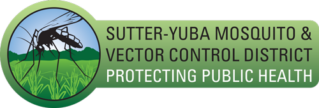Before California was settled by pioneers and gold seekers, thousands of seasonally flooded acres of lowlands, marshes and other wetlands produced hoards of mosquitoes impacting the lives of Native Americans. Certain evidence of an archeological and anthropological nature suggest that these native cultures were seasonally compelled to move or abandon coastal and lowland areas. Unmitigated mosquito breeding resulted in unlivable conditions. Similarly, other tribes inhabiting mountain environments would face springtime hatches of snow pool and floodwater mosquitoes. As the Gold Rush drew miners to California in the 1850’s, the prospectors were quickly introduced to the mosquitoes, their bites and the pathogens they transmit.
The origins of organized mosquito control in California began in the Bay Area. Salt marshes were producing massive numbers of mosquitoes, disrupting the lives of residents. Initial control efforts focused on constructing drainage canals and ditches in these marsh areas. In 1909, malaria claimed 112 lives in California causing more attention to be directed toward abating mosquitoes. Research demonstrated that mosquito-borne diseases could be managed by implementing mosquito control methods. On May 25th, 1915, the Mosquito Abatement Act was passed, giving local governments the power to obtain revenues and form special districts for the purpose of protecting the public from the hazards of mosquito bites and mosquito-borne diseases. That same year a small group of districts formed. Today approximately 65 organized mosquito control agencies serve the residents of California.
The Sutter-Yuba Mosquito Abatement District was formed in 1946. The first record of an assembled board is the minutes from their first meeting dated February 25, 1946. The District was created under the Mosquito Abatement Act of 1915, as amended, which is contained in the California Health and Safety Code, Division 3, Chapter 1, beginning with section 2000.
The District is now comprised of approximately 706 square miles, 486 of which is located in Sutter County and 220 in Yuba County in Northern California. The primary source of income for the District is derived from ad valorem property taxes. The District does not receive a share of sales tax, hotel room tax, nor other state or local taxes. Parcel owners in the District have about two cents of each property tax dollar they pay directed to fund mosquito control annually.
The District office and yard is located at 701 Bogue Road, Yuba City, CA. We currently have a staff of 16 permanent employees and annually hire 12 – 16 seasonal or summer employees. All of our management and permanent staff maintain certification issued by the California Department of Health Services in mosquito and vector control. District staff operates and maintains a fleet of surveillance and specialty vehicles used for the surveillance and treatment of mosquitoes and mosquito sources. The District is a member of the Mosquito and Vector Control Association and works in cooperation with such agencies and institutions as: other California Mosquito Abatement and Mosquito and Vector Control Districts; the local Health Departments; County Agricultural Commissioner offices; the University of California labs and research departments and the California Department of Health Services. We are also part of the Sutter and Yuba County Africanized Honeybee Task Force which is preparing to deal with the problems this bee will cause if it arrives in our area. The primary goal of the District is to conduct field surveillance to facilitate the detection and control of mosquitoes in order to suppress their populations and prevent the transmission of mosquito-borne diseases. We also provide consultation and assistance for other vectors of public health importance such as; flies, fleas, ticks, and their associated diseases as resources allow.
